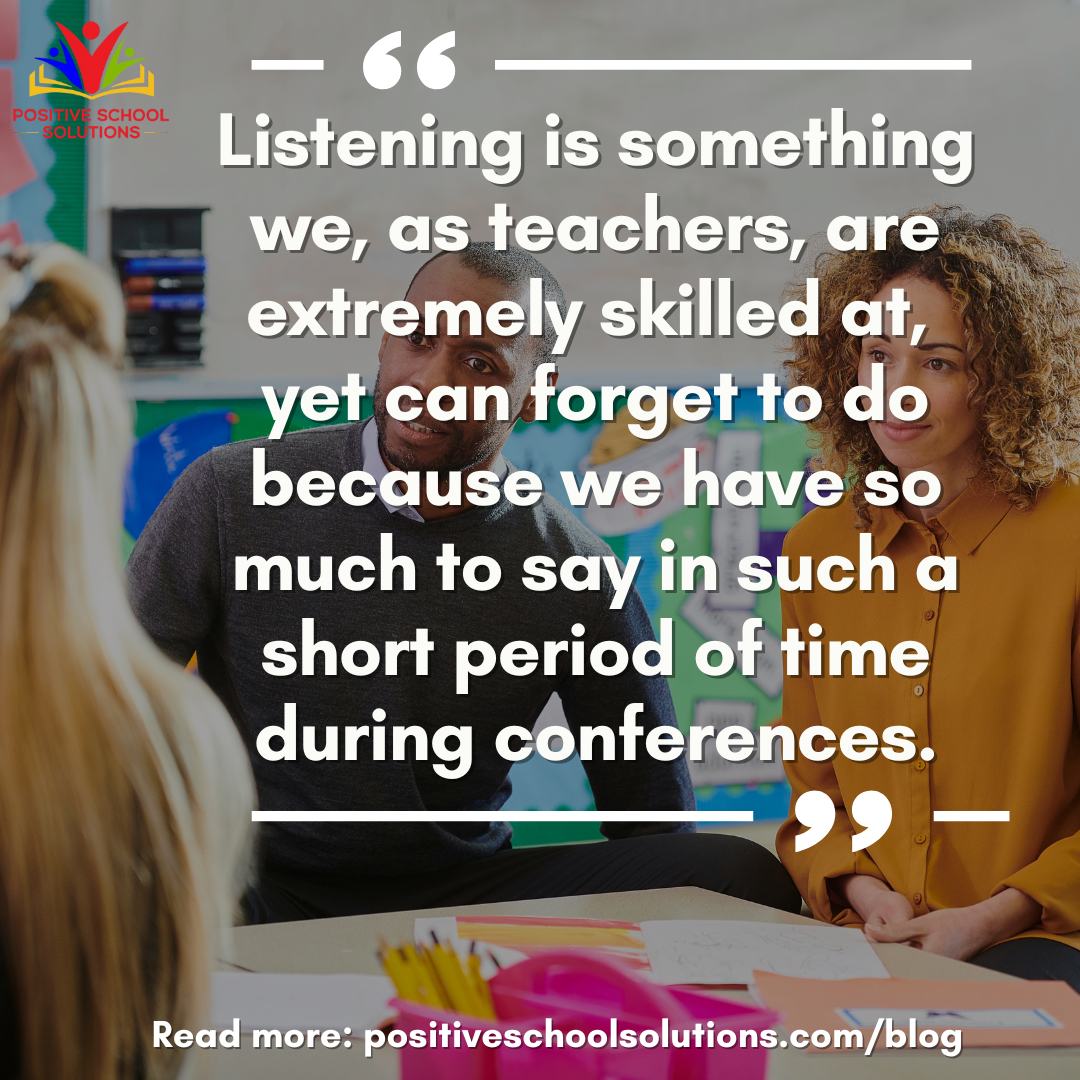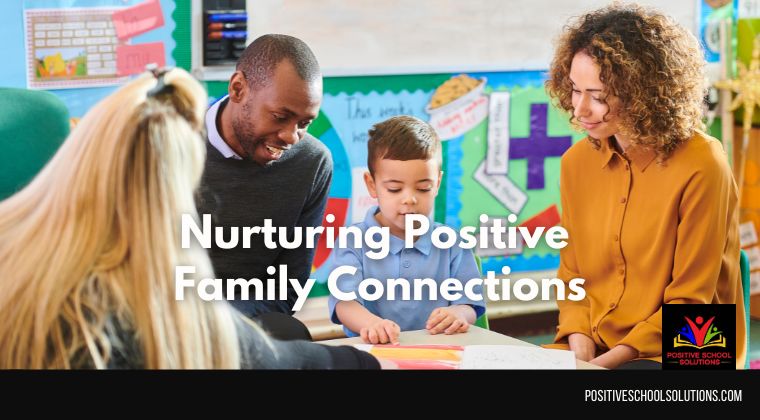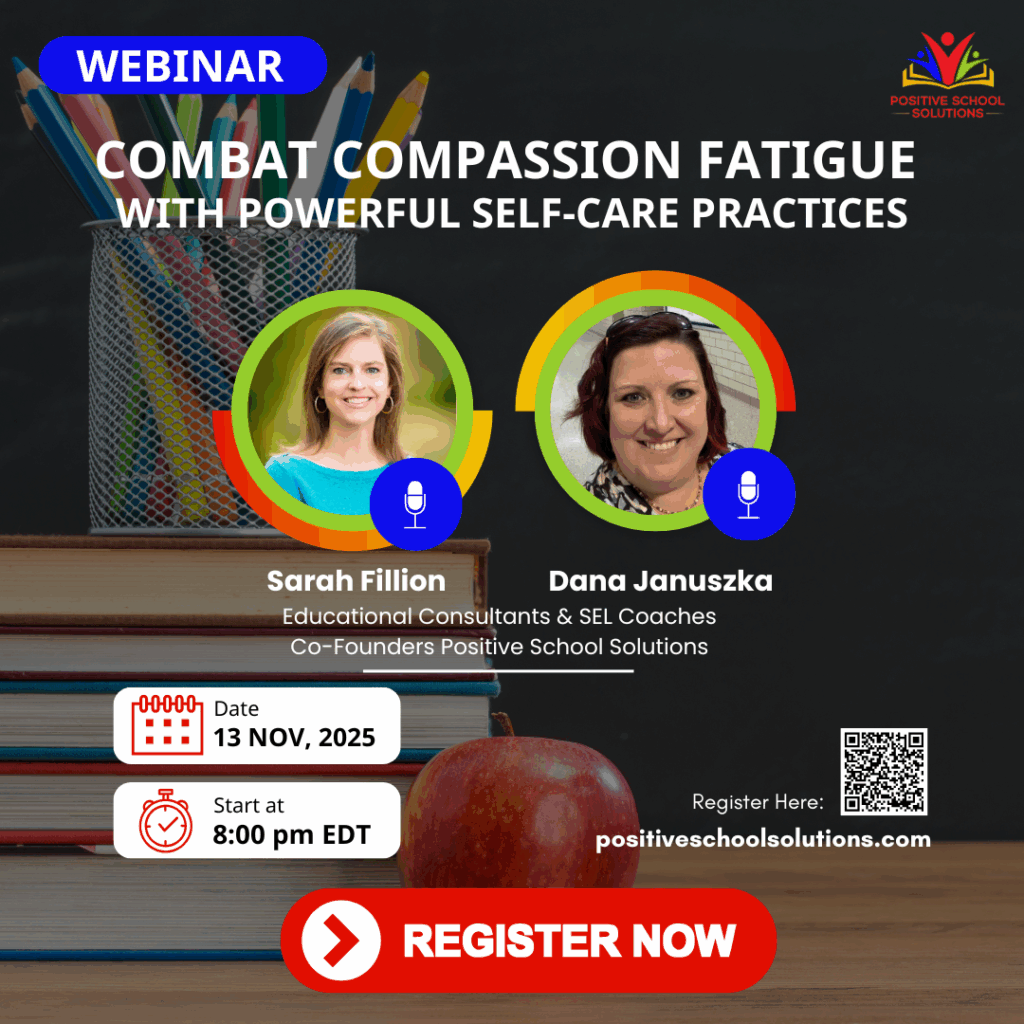 In this final piece of the Conference Engagement we’ll examine one more strategy that can be used during the conference to increase caregiver engagement. This strategy is a tried and true strategy and one that most of us try to employ throughout our lives everyday. While the strategy is simple in naming, it is complex in carrying out, which is why we’re breaking it down with some specific ways to implement throughout the conference.
In this final piece of the Conference Engagement we’ll examine one more strategy that can be used during the conference to increase caregiver engagement. This strategy is a tried and true strategy and one that most of us try to employ throughout our lives everyday. While the strategy is simple in naming, it is complex in carrying out, which is why we’re breaking it down with some specific ways to implement throughout the conference.
Be present and listen.
-
- This tip is similar to prepare, prepare, prepare! Listening is something we, as teachers, are extremely skilled at, yet can forget to do because we have so much to say in such a short period of time during conferences. In order to engage caregivers during conferences, it is essential that we pause and truly listen to what they are saying. Whether they are providing a response to a question you have asked or are volunteering additional information, what the caregiver is saying will provide you fresh insight to the student and fuel future success. When we are thinking about listening, there are a few steps that truly engage the speaker.
-
- Be respectful – silence is ok! Be respectful and give think-time so that the caregiver can thoughtfully reply to your questions. Make sure you allow a beat of silence once the caregiver is done speaking to make sure they have completely wrapped up their thoughts. Similarly, if they pause in the middle of the sentence, they might be trying to retrieve a word or be trying to phrase something carefully, so wait and continue to listen. A pause of 3 – 5 seconds allows you to ensure they are finished and provides you a moment of ‘think time’.
-
- Seek to understand instead of being understood – we want to make sure that everyone attending the conferences receives the same message. As the teacher leading the conference, you have put a lot of time and energy into planning what you will say and how you will say it. To engage caregivers in the conversation, pause and ask if there are any questions, especially when you have wrapped up one section of your conference (link to planning sheet).
-
- Listen with your eyes as much as with your ears. It can be easy to ask a question and then look down at your planning sheet or start writing notes. If we resist this urge and instead listen with our eyes by watching body language, caregivers’ eyes as they speak, and hand gestures, we can pick up on cues quickly and help facilitate the conversation further to truly gain insight from this valuable conversation. Through watching body language, we can see if someone is tensing up and then offer reassurance that we’ll be helping the student to be successful. Or, if we see that a caregiver is smiling at what we’re saying and nodding their head, we may pause and ask a question to allow them a chance to elaborate on this point.
-
- Conducting conferences via technology can hinder the ability to listen with our eyes as you will not see as much of the individual (many times hand gestures will be missed), however it is not impossible to do so! By staying present and actively listening to the caregiver, we can learn a lot and use the conversation as a way to better understand the student we are working with.
-
- This tip is similar to prepare, prepare, prepare! Listening is something we, as teachers, are extremely skilled at, yet can forget to do because we have so much to say in such a short period of time during conferences. In order to engage caregivers during conferences, it is essential that we pause and truly listen to what they are saying. Whether they are providing a response to a question you have asked or are volunteering additional information, what the caregiver is saying will provide you fresh insight to the student and fuel future success. When we are thinking about listening, there are a few steps that truly engage the speaker.
Engaging caregivers during conferences takes some additional planning and time set aside within the context of the conference, however the benefits are tenfold to the effort we put in. By spending time focusing on creating an engaging conversation with our child’s caregivers, we highlight that they are an integral part of academic success. When conversations are held at conferences, we learn about the child we are working with, identify more personal connections we can make with them, and gain ideas on how to improve our practices to best support the growth of each individual in our classroom.
For more on building relationships with families, check out our On-Demand Course: Nurturing Positive Family Connections
Written by Sarah Fillion & Dana Januszka for Positive School Solutions 2020


